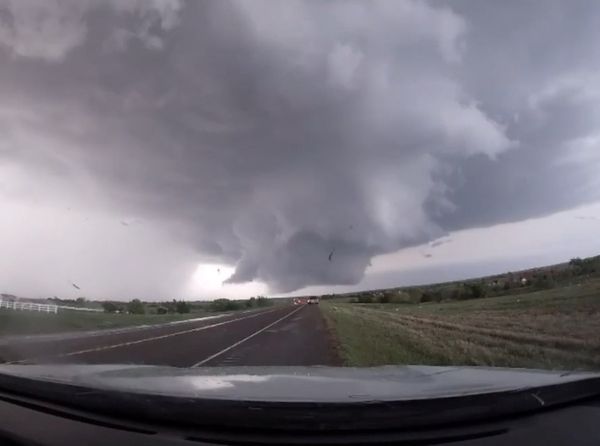
One-Punch Man is a manga-turned-anime about existential dread, and the stilted, life-sucking agony of being unchallenged.
"I love One-Punch Man, particularly because the creator at the start actually had no idea how to create good art," said Dylan Telano, founder and CEO of VoyceMe, a platform for publishing and reading webcomics. "The original One-Punch Man was drawn on a napkin and that ended up getting published, and then it became the series that we all love. It’s honestly one of the inspirations behind why I started VoyceMe."
The series follows a superhero who, no matter what, beats all his foes with a single punch. And that gets pretty depressing after a while. The scale of the anime superhero’s problem may be unrelatable (who on Earth can solve all their problems with a single punch?), but his search for meaning in an impossible world is universal. And Telano is doing something many would consider impossible—or at the very least, far from being venture-backable: With VoyceMe, Telano is hoping to solve core issues for artists working in manga and webcomics, while meeting the demand of a growing and interconnected media market.
VoyceMe has raised new seed capital, bringing its total funding so far to $10 million, Fortune can exclusively report. This latest round was led by Redpoint Ventures, with participation from Torch Capital, Red Sea Ventures, and Clara Vista Partners, all existing investors. The company did not disclose a valuation.
The bear case for VoyceMe is pretty obvious: If monetization never takes off at scale or if it never reaches that scale in the first place because the market isn’t big enough, that’s that. The bull case, I’d argue, is a lot more interesting. That case expressly includes the idea that not only is the marketplace for anime and webtoons big enough—it’s growing.
“We actually have three markets that all hit our demographics, the anime market, the manga market and the webtoon market," said Telano. "What's interesting about all those markets is that they’re rapidly growing."
There’s certainly evidence this marketplace is maturing—for example, consider the IPO of OG comics publishing platform Webtoon this summer. And the numbers on where the marketplace is headed are compelling, especially when considered in one fell swoop: By 2032, the manga market is projected to hit $53 billion, the anime market is expected to reach $60 billion, and the webtoon market’s set to make it to $40 billion, according to various market researchers.
For VoyceMe, the goal is to make money in a multi-pronged plan that includes licensing its proprietary AI tools, producing original content (for which VoyceMe owns the intellectual property), and monetizing its platform and its relationships with creators (carefully) over time.
VoyceMe declined to disclose any current revenue numbers, but did say the platform receives more than eight million monthly visits, with readership since last year spiking by 1,000%. The company has a scattered world of semi-competitors, from newly public Webtoon to the nontraditional comics-sharing that happens on Reddit.
But Telano’s thesis is this: The North American market, considered to be "prized" but nascent compared to Asia, is set to grow. And that means that there are going to be more manga, anime, and webcomic fans in a marketplace that’s not ready to meet the demand.
"There is, in my opinion, a massive misalignment between supply and demand, and ultimately the creators are suffering from the consequences of a hard life, with low pay," said Telano. "Creators live such crappy lives, and in this space, the issue runs really deep…People read content in this space very quickly. It takes five artists working 80 hours a week to make one chapter, then it gets consumed in 30 seconds."
Telano connected me with artist Matthew Johnson, who was one of the top 10 creators on the platform before he started working with VoyceMe. (His work includes Thrash: The Rise of Shidou, a moody but luminous comic about a world of dying gods.) Johnson is candid about the struggles that artists like him face, and said that VoyceMe streamlined his artistic process, from promotion and marketing assistance, to technological aids, to helping reduce the physical strain.
"Working on art is a physical labor, it’s not just a hobby," said Johnson. "I know that’s probably going to blow someone’s mind…But that’s where the hardships come in, the repetitive tasks. I had a wrist injury last year and Dylan really had his ear out, and said ‘let me do something to help.’ In my experience, VoyceMe understands and is sympathetic to artists, and that speaks volumes."
One of the things about manga and webcomics is that creators are readers, and readers are creators. If you know anyone who loves anime or manga, you know that love is often lifelong.
"The past few years have taught us that consumer is hard, and that a truly fanatical following is required to build an enduring platform," said Redpoint Ventures principal Meera Clark via email. "The sheer number of hours these weebs (a new word for me) spend consuming content and engaging in and around it is nutty—and presents the clearest pull we've seen for a vertical social network in a very long time."
I maintain that webtoons on their own aren't venture-backable, but VoyceMe’s ambitions are clearly bigger. And I think there’s still a lot we don’t know about the limits of the combined manga, anime, and webtoon market in the U.S. It may be the wrong question anyway. After all, as One-Punch Man hero Saitama asks: "Who decides limits? And based on what?"
See you tomorrow,
Allie Garfinkle
Twitter: @agarfinks
Email: alexandra.garfinkle@fortune.com
Submit a deal for the Term Sheet newsletter here.
Nina Ajemian curated the deals section of today’s newsletter.







